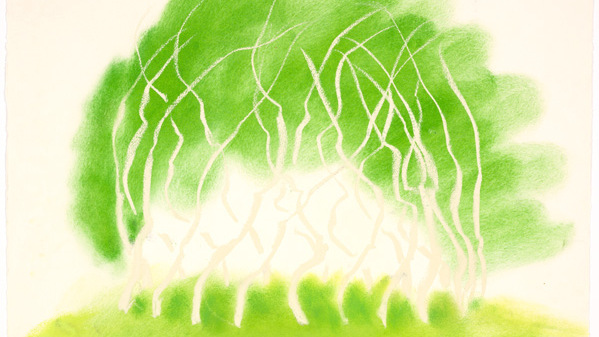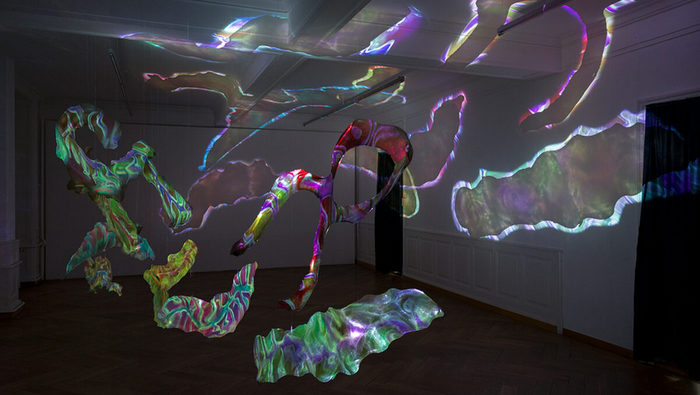Beginning Wednesday, June 28, the Whitney Museum of American Art presents Inheritance, an exhibition of nearly sixty artworks by forty-three leading artists that traces the profound impact of legacy across familial, historical, and aesthetic lines. Featuring primarily new acquisitions and rarely-seen works from the collection, this diverse array of paintings, sculptures, videos, photographs, drawings, and major time-based media installations from the last five decades asks us to consider what has been passed on and how it may shift, change, or live again.
Inheritance is organized by Rujeko Hockley, Arnhold Associate Curator at the Whitney Museum of American Art, and is on view in the Museum's sixth-floor galleries from June 28, 2023, through February 2024.
Drawing inspiration from Ephraim Asili's 2020 film of the same title, Inheritance takes a layered approach to storytelling by interweaving narrative with documentary and personal experiences with historical and generational events. The exhibition considers multiple meanings of inheritance, whether celebratory or painful, from one era, person, or idea to the next. A group of works examining the cycle from birth to death opens the exhibition, while other galleries take up different kinds of lineages, such as the ways artists borrow from and remake art history or unspool legacies of racialized violence and their recurrences.
"The poet Rio Cortez speaks of being 'framed by our future knowing'—even as we sit at this moment in time, we slide backward and forward, thinking not only of our foremothers but also of descendants we will never know," said Rujeko Hockley, Arnhold Associate Curator at the Whitney Museum of American Art. "Inheritance was inspired by questioning how we arrived at our current moment, as individuals and as a society, and where we might be going."
"With the inclusion of so many new acquisitions and works rarely on view at the Museum, Inheritance offers a unique opportunity to frame the Whitney's collection and to introduce new artists and works of art while making a powerful argument about the relationship between the past and present through this idea of inheritance," said Jane Panetta, the Whitney's Nancy and Fred Poses Curator and Director of the Collection.
Artists featured in this exhibition include Ephraim Asili, Sadie Barnette, Kevin Beasley, Diedrick Brackens, Beverly Buchanan, Widline Cadet, Andrea Carlson, Jonathan Lyndon Chase, Ralston Crawford, Mary Beth Edelson, John Edmonds, Kevin Jerome Everson, Chitra Ganesh, Todd Gray, Wade Guyton, David Hartt, Emily Jacir, Wakeah Jhane, Mary Kelly, Deana Lawson, An-My Lê, Maggie Lee, Sherrie Levine, Dindga McCannon, Ana Mendieta, Thaddeus Mosley, Lorraine O'Grady, Kambui Olujimi, John Outterbridge, Pat Phillips, Faith Ringgold, Sophie Rivera, Carissa Rodriguez, Cameron Rowland, Sturtevant, Hank Willis Thomas, Clarissa Tossin, WangShui, Kara Walker, Joan Wallace, Carrie Mae Weems, and Bruce and Norman Yonemoto.
Exhibition Overview — Inheritance
Organized thematically, Inheritance begins with an interdisciplinary selection of artworks exploring inheritance in its most commonly understood forms—the intrafamilial and the intergenerational. Works on view include Sadie Barnette's installation Family Tree II (2022), Mary Kelly's film Antepartum (1973), and photographs from Sophie Rivera's Double Exposure series (1995), among others. In the installation Rivers, First Draft (1982, printed 2015), Lorraine O'Grady examines her experience growing up in New England as a child of Caribbean immigrants and her development as an artist.
As inheritors of past generations of makers, several featured artists look to influential art historical and political movements of the twentieth century, updating related artworks through shifts in medium, scale, and intent. John Edmonds's photograph Tête d'Homme (2018) and Hank Willis Thomas's sculpture Strike (2018) directly reference specific historical works, while Joan Wallace's Bob's Your Uncle (1991), on view at the Whitney for the first time, critiques the legacy of Minimalism.
In addition to intrafamilial and art historical inheritances, the exhibition considers some of the painful and difficult legacies that have shaped our society, specifically colonialism and the enslavement of Africans. In the five-channel video installation ...calling to me from the angry surface of some grey and threatening sea, I was transported (2007), Kara Walker employs paper silhouettes, archival photographs, and other imagery to examine the history and long aftermath of slavery in the United States. Additional works include Kevin Beasley's slab sculpture The Road (2019), An-My Lê's photograph Monument, General P.G.T. Beauregard, New Orleans, Louisiana (2016), and Faith Ringgold's lithograph United States of Attica (1971), to name a few.
Focusing primarily on the Global South and Indigenous communities around the world, the exhibition's final section explores the inheritance of ancestral memory across generations, looking at some of the origins of culture and belief through geography, history, and ideology. Whether examining the retention of African iconographies and artistic traditions in diasporic communities, goddess archetypes, or Indigenous creation myths and mythological figures from the Americas, artists such as John Outterbridge, Ana Mendieta, and Andrea Carlson consider their continued presence and impact on the contemporary world.
Together, the artists and artworks in Inheritance tell a story of a resilient and shared human past, reverberating into the present and informing the future.
Free Public Programs
A series of free virtual and in-person programs are offered in conjunction with Inheritance. More information about these programs and how to register will be available on the Museum's website as details are confirmed.
Source: Whitney Museum
Related Publications

Galerie Lelong & Co. | David Nash
November 22, 2024(S)elf Portraits: Fiction, Fantasy, and Sci-Fi in Portrait
November 18, 2024
Auswahl 24- Guest artist: Victoria Holdt
November 15, 2024










